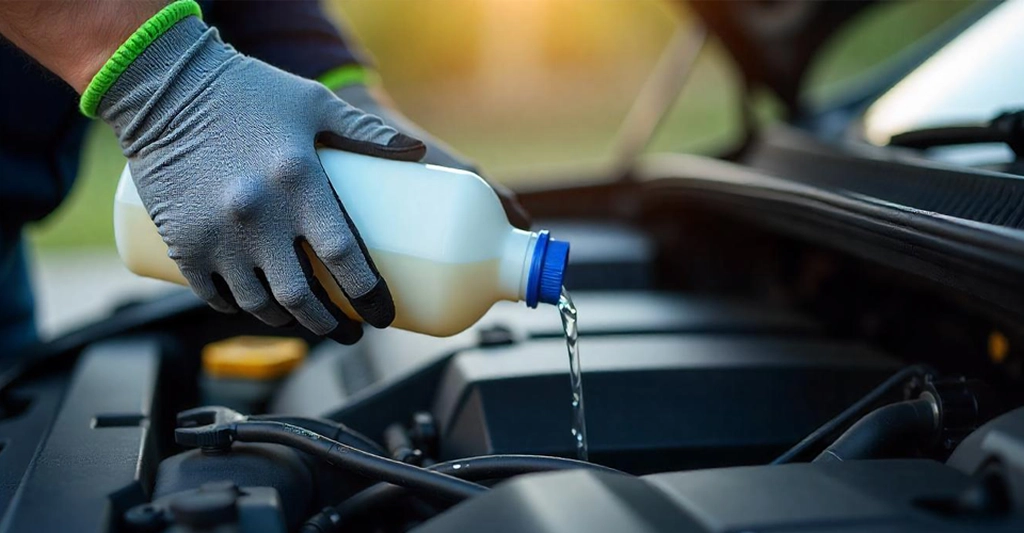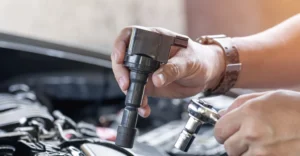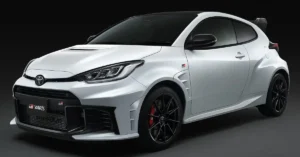If you’ve ever popped open your bonnet and poured regular water into your car’s coolant tank, you’re not alone. It might seem harmless especially in a hot climate where freezing temperatures are rare but is it really safe to use plain water instead of proper engine coolant?
Let’s break it down. While water might help your engine in a pinch, relying on it long-term can lead to overheating, corrosion, and even catastrophic engine damage. In this blog, we’ll explain why coolant is essential, when it’s okay to use water, and what you should never do if you want your engine to last.
Is It Okay to Use Water Instead of Coolant?
Only in an emergency.
If your engine is overheating and coolant isn’t available, you can top up with clean, distilled water temporarily just to get your home or to the nearest garage. But this is strictly a short-term solution. Continuing to drive with only water in the cooling system can damage your engine over time even in warm climates.
Coolant (also called antifreeze) does much more than prevent freezing. It protects your engine from boiling over, corrosion, and internal damage. Without it, you’re putting your vehicle’s health at serious risk.
Water vs. Coolant: What’s the Difference?
1. Boiling Point
Plain water boils at 100°C. Most engines operate close to or even above this temperature, especially under heavy load or in warm weather.
Coolant, on the other hand, is a mixture of antifreeze (like ethylene glycol) and distilled water typically in a 50/50 ratio. This raises the boiling point to around 106°C or more, depending on pressure. Some modern engine coolants can handle over 130°C.
Why it matters: Water boils off quickly under pressure, leaving your engine dry and at risk of overheating. Coolant stays stable, keeping your engine temperature regulated.
2. Freezing Point
Coolant isn’t just about heat it also protects your engine in colder conditions. Pure water freezes at 0°C. If water is left in the radiator during winter, it can freeze, expand, and cause cracks in the engine block, radiator, or hoses.
Coolant prevents freezing down to -35°C or lower, depending on the mix.Why it matters: Even if you don’t experience freezing temperatures often, a cold snap or mountain drive can be enough to freeze the system if it contains only water
3. Corrosion Protection
Tap water often contains minerals that build up over time, forming scale and corrosion inside the radiator, water pump, and engine block. This reduces cooling efficiency and leads to clogged passages and component failure.
Coolant contains anti-corrosion additives that protect the metal surfaces inside your engine. It also prevents limescale build-up.
Why it matters: Using untreated water especially hard water can dramatically shorten the life of your cooling system.
What Exactly Is Coolant (Antifreeze)?
Coolant is a liquid blend made by mixing antifreeze with distilled water. Antifreeze is typically made of ethylene glycol or propylene glycol, and it helps keep the coolant in liquid form at both high and low temperatures.
Coolants are often colour-coded (green, pink, blue, red, orange, or yellow), and each vehicle requires a specific type. Always check your owner’s manual or speak with your mechanic before topping up or replacing coolant.
How Does Engine Coolant Work?
As your engine runs, it generates intense heat. Without cooling, it would quickly overheat and seize. The coolant absorbs this heat as it flows through the engine block and cylinder head. It then moves to the radiator, where it cools down via airflow and the radiator fan, before circulating back into the engine.
This cycle repeats continuously as long as the engine is running. Coolant also helps keep the heater system functioning by transferring warm fluid to the cabin heater core.
Risks of Using Only Water in the Cooling System
While using water might seem like a cheap and easy option, here’s what can go wrong:
- Boiling and evaporation: Water evaporates at a lower temperature, leaving your engine without enough fluid.
- Corrosion and rust: Water corrodes internal metal parts, especially in aluminium and cast-iron components.
- Freezing damage: If the temperature drops unexpectedly, water can freeze and expand, cracking the radiator or engine block.
- Clogging: Minerals and impurities in water can form scale, blocking narrow cooling passages.
How to Safely Add Coolant
- Wait until the engine is completely cool before opening the radiator or reservoir cap. Pressure builds up inside the system, and opening it hot can cause serious burns.
- Check the coolant level using the markings on the side of the coolant reservoir.
- If the level is low, top up with the correct type of coolant, either pre-mixed or a 50/50 mix of antifreeze and distilled water.
- Don’t overfill. Coolant expands when it gets hot.
- Start the engine and let it run for a few minutes. Watch for leaks and monitor the temperature gauge to ensure it stays in the normal range.
Choosing the Right Coolant for Your Car
Each car manufacturer has its own cooling system design and recommends specific coolant types. Never mix different colours or types of antifreeze unless they are certified as compatible.
If you’re unsure what your car needs, check the owner’s manual or speak to a professional.
Final Thoughts: Stick with Coolant for Long-Term Protection
While water can save the day in an emergency, it’s no substitute for the real thing. Coolant is essential for engine performance, fuel efficiency, and long-term reliability. Using water alone may feel convenient, but it’s a shortcut that can lead to expensive repairs.
If you’ve topped up with water recently, flush and replace with proper coolant as soon as possible to avoid lasting damage.
Need a Coolant Flush or Inspection?
At MotorHub, we connect you with trusted service centres and mobile mechanics who can inspect your cooling system, flush out old coolant, and top it up with the correct fluid wherever you are.



